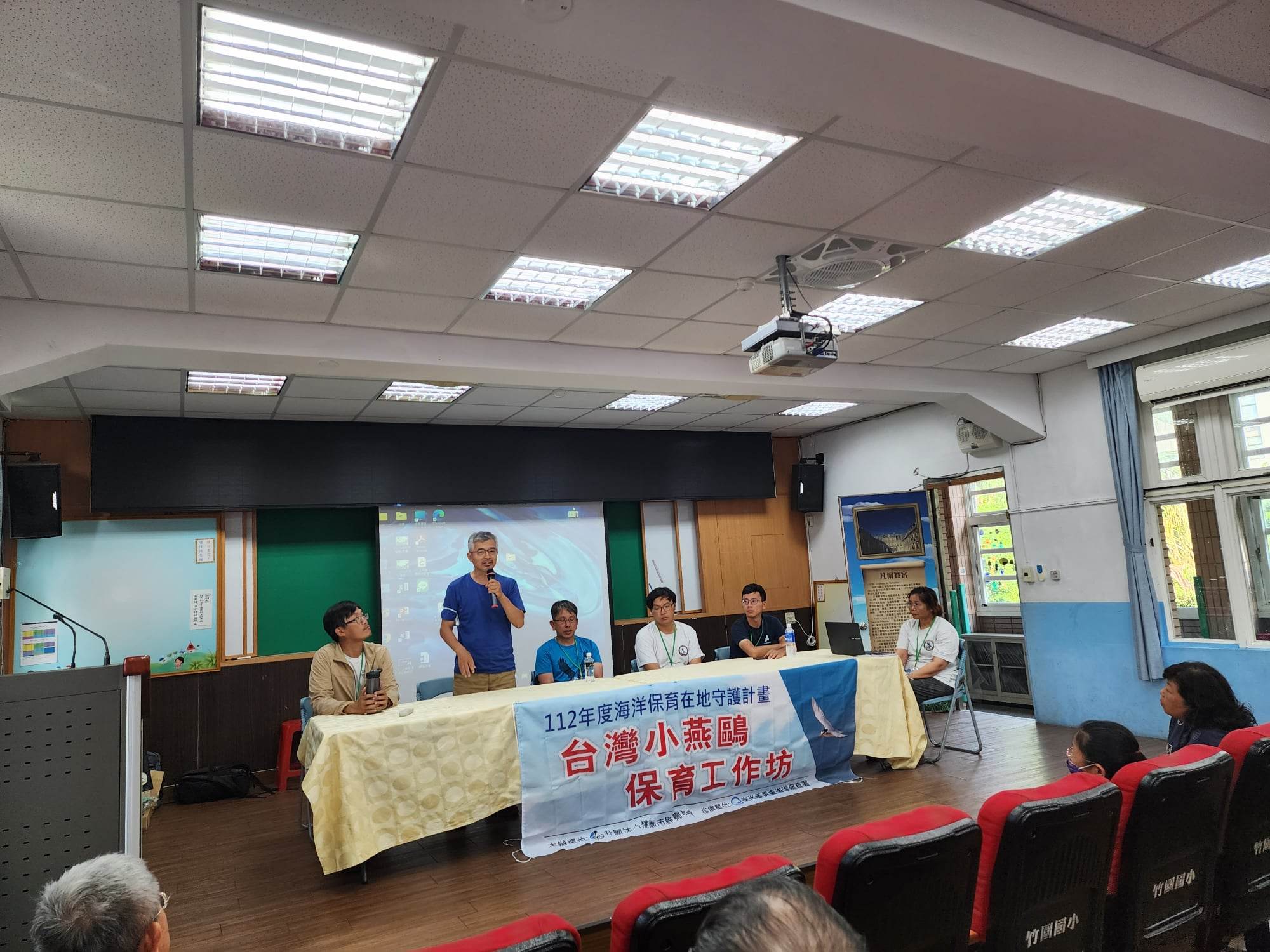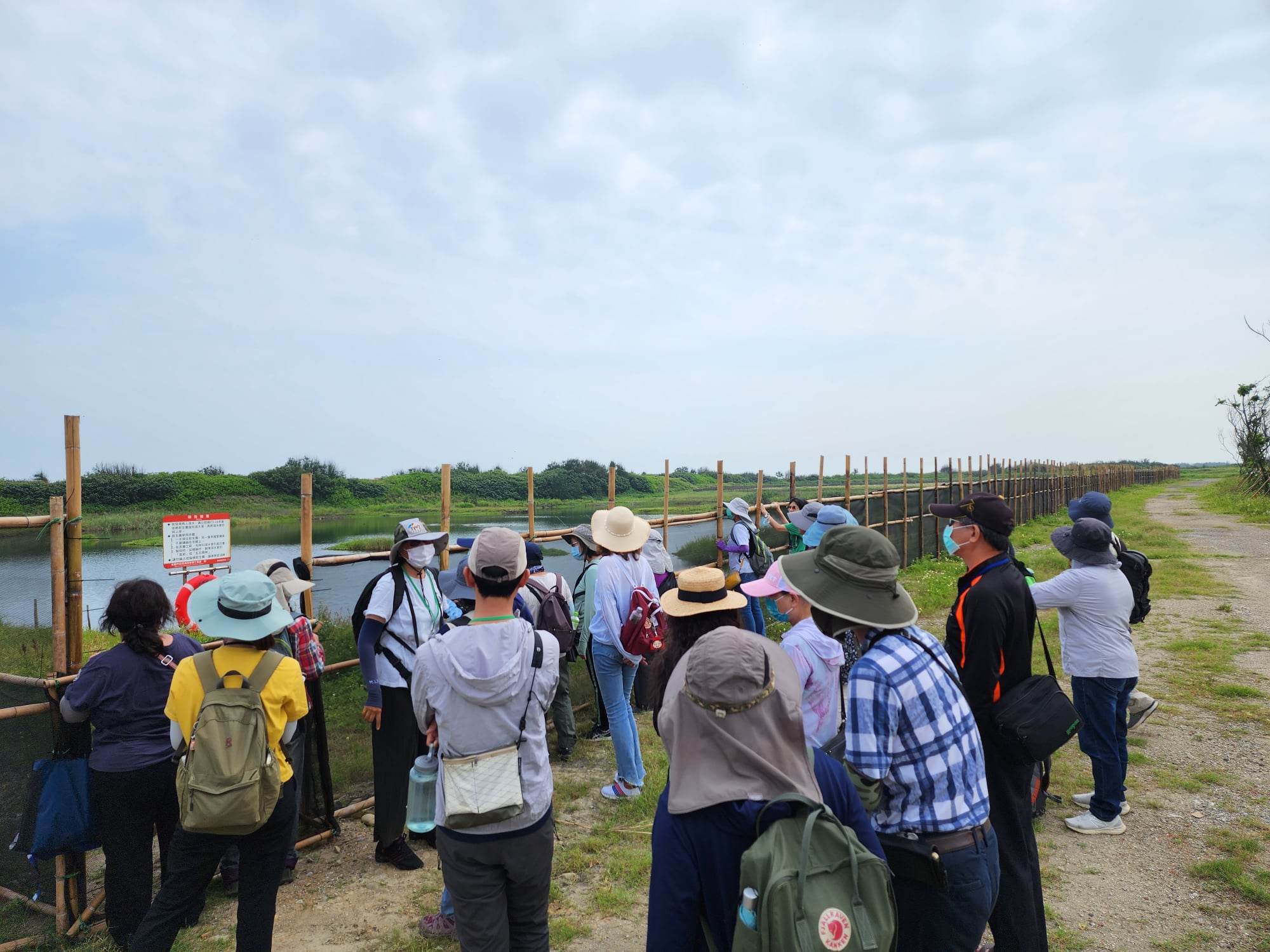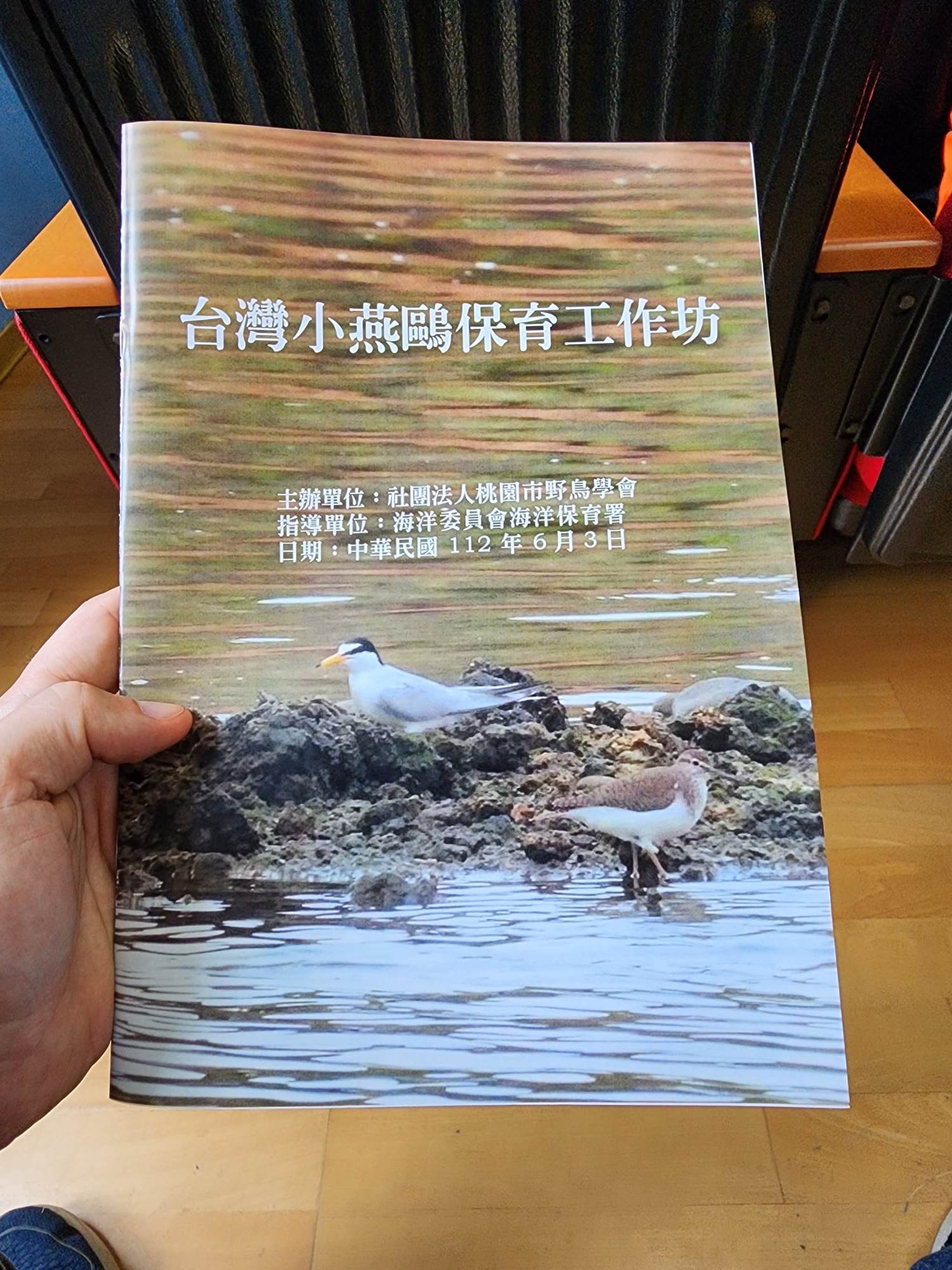Little Tern Conservation Workshop held in Taoyuan

Speakers discussing possible Little Tern conservation actions for the future
By Scott Pursner
Every year, Little Terns come to Taiwan for breeding after wintering in Australia, arriving around April and leaving by September. Though the IUCN considers it a species of Least Concern, in Taiwan it is a Level II protected species due to declining numbers.
On June 3, 2023 the Taoyuan Wild Bird Society hosted the first Taiwan Little Tern Conservation Workshop. It was supported by the Ocean Conservation Administration and took place in two parts. During the morning session, the TYWBS took participants to visit two of the most important breeding Little Tern sites in Taoyuan, Xucuogang and the Breeding Conservation Area in Zhuwei Harbor. Xucuogang has been registered as a wetland of national importance by the central government and is a well-known place for spotting globally threatened Chinese Egrets during the migration season. During the visit, three were even recorded there. Meanwhile, the Breeding Conservation Area in Zhuwei Harbor was only developed in 2019 and was created using the dredged sand from the creation of a deeper port down river and is a collaboration between the TYWBS, the Taoyuan City Government Agriculture Bureau, and the Taoyuan City Government Coastal Management Engineering Office and Taiwan's CPC Corporation. Visiting these sites allowed delegates from other parts of Taiwan to better understand the local environment and possible hazards to the Little Terns breeding in Taoyuan.
 Birdwatching at the Xucuogang Wetland of National Importance
Birdwatching at the Xucuogang Wetland of National Importance
The afternoon session took place at Zhuwei Elementary School. It featured talks by three different organizations which over the last two years have been doing Little Tern surveys and conservation work: the Taoyuan Wild Bird Society, the Wild Bird Society of Hualien, and the Wild Bird Society of Yilan. After the talks, a discussion of future actions for Little Terns was held.
 The Taiwan Little Tern Conservation Workshop Event Booklet
The Taiwan Little Tern Conservation Workshop Event Booklet
During the talks, speakers shared about the current environmental conditions at the breeding sites. Of note was that although the Taoyuan populations breed in a sandier area, the populations recorded in Hualien and Yilan would nest in habitat that was gravelly or a gravel/sand mix. Also, although the numbers in Taoyuan are not as stable, the habitat in Hualien's Lanyang River Mouth is now better understood as a quality and stable breeding area. Meanwhile, in Yilan, there was very good breeding habitat in the county. In 2022 surveys showed that the Lanyang River Mouth and Nan’ao River Mouth had the lion’s share of the 742 nests recorded there.
Threats to breeding Little Terns were also discussed. As the birds breed in coastal areas, heavy rains which could lead to flooding and then habitat loss was an issue, as was vegetation and weed growth near the nests. Excessive heat affected both parents and offspring alike and so each group shared how they created small structures so the young birds could beat the heat and also have more protection. Habitat disturbance by humans as well as rats, cats and especially feral dogs was also discussed as a major issue. Each group shared details of how they crafted defenses if there were not already naturally occurring ones. All speakers noted that the disturbance issue is quite difficult though.
Finally, after the talks, a discussion was had on how to move forward with conservation of Little Terns in Taiwan now that more is understood about the species and its breeding behavior. One suggestion was to work more with local enterprises government agencies and NGOs in an effort to continue the current work. Another idea was the creation of a Little Tern communications platform which could be managed by the Taiwan Wild Bird Federation. All three groups are TWBF partner organizations and the national bird conservation organization, it is best suited for that role. Overall, the event served as a good means of knowledge exchange and brainstorming for the future of Little Tern conservation in Taiwan.
